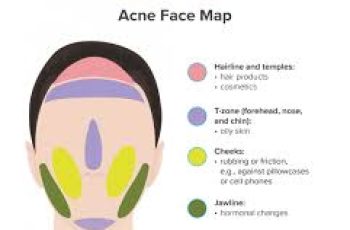How to winterize your skin
Change up your skin care routine to prepare for winter
It’s the Friday before the August 1 holiday so of course I wanted to talk to you about how to winterize your skin. Seriously, I think it’s best to prepare for winter in advance!
The cold months affect all skin types, but dry skin in particular will be affected by the harsh weather and the drop in temperatures, causing the skin to lose all moisture and hydration, which is not ideal because it’s already lacking moisture! Oily skin may prefer the winter months because the summer months tend to make the shine more prominent.
So I thought I’d give you some tips to help your skin get through the winter!
Exfoliation
I know I seem to be talking about exfoliation all the time, but this is really the one step in your skincare routine that will really change the way your skin looks. Especially in the cold months, when your skin is dry, more and more flaky patches will form on your face.
I don’t want to get too scientific, but our skin has a cycle where we shed dead skin cells over the course of 30 days, yes, similar to a snake, albeit a lot less dramatic! During the cold months, you’ll find that your skin can’t shed these cells as effectively, so they build up, which can lead to breakouts, blemishes, and dry patches. You’ll also notice that your skin looks a little dull and pale.
All of this can be addressed with a facial peel to remove the remaining cells that make your skin appear grey and dull. Procoal’s Exfoliating Face Scrub contains detoxifying charcoal and a powerful yet gentle pumice stone to remove all the buildup without stripping away water and oil.
Hydrate
Here’s another tip I keep talking about… drinking enough water throughout the day should be your top priority. It supports your brain function and has countless benefits for your vital organs. Water is good for your skin, too, but there’s a small downside. Your skin is the largest organ, but you’ll notice that it’s always the last sign that it’s got enough water.
If you imagine a fountain with all of your organs waiting to take a sip, you’ll notice that your skin is at the back of the queue. Sure, she’s the largest and can easily push herself to the front, but she’ll be waiting for her turn, which sometimes causes her to run out of water.
Then you need to help it restore the plumpness and moisture to your skin with a product that’s super hydrating and packed with a powerful blend of ingredients. Acids like AHA, Vitamin C, etc. are always good for the skin because they moisturize the skin and smooth out fine lines that are more common in the winter.
Protection
I know it seems strange to talk about SPF in the winter, but it is still important, even crucial, to use SPF every day in the winter to protect your skin from premature aging. The sun’s rays that damage the skin are present all year round. UVB, also known as burning rays, are more noticeable in the hotter months, and UVA, also known as aging rays, can penetrate clouds, water, and even glass. You need to protect yourself from these rays in the winter. You can choose a facial SPF or a moisturizer with built-in sun protection.
Don’t forget your lips
Wind, rain, snow, and freezing temperatures can cause chapped lips, which can be very uncomfortable. It’s best to remember to use a sugar scrub and a moisturizing lip balm to keep your lips looking and feeling their best.
Weekly Mask
One of the easiest ways to keep your skin hydrated throughout the winter is to use a mask once a week. This can be any formula that works best for your skin type.
Marine Moisture is our most hydrating face mask yet, with a powerful blend of ingredients that transforms the skin, restores balance and gives it an all-over glow.
Fake it
If you find that even after all the love and attention, your skin still looks dull and even a little grey, you can always ‘fake it till you make it’ and beautify your skin with makeup. A cream foundation with light-reflecting particles gives skin a beautiful glow. Combine with highlighter and blush for a real pop of colour and a healthy look. The perfect disguise until spring rolls around again!
So, these are some winter skin survival tips to help you deal with the harsh winter elements that wreak havoc on your face! For now, though, enjoy the rest of your time and the long, sunny weekend ahead. At least now you know you’re prepared because winter is coming…whether you like it or not.
DQH Can I use salicylic acid first and then vitamin C?
It’s easy to create a skincare routine, but knowing how to use it is another thing entirely. In most cases, if you’re not getting the desired skin results, it could be due to the layering of conflicting ingredients. So, is it possible that salicylic acid and vitamin C are such ingredients? Or are these active ingredients the duo that’s been missing from your skincare routine? If you want answers, stick around because today we are going to explain the benefits of salicylic acid and vitamin C and how they can be used in your daily life.
What are the benefits of salicylic acid for skin?
Salicylic acid is one of the most commonly used beta hydroxy acids and is favored by many people with oily, acne-prone skin. This acid is derived from willow bark, and unlike its water-soluble relatives (called alpha-hydroxy acids), salicylic acid is oil-soluble, which means it can penetrate deeper into the lower layers of the skin. Once it reaches the lower layers, it can help unclog pores of excess sebum, dirt, bacteria, debris, and impurities. This results in clearer skin tones and greater definition.
Not only does salicylic acid benefit the underlying layers, but the outer surface of the skin benefits as well. When applied to the skin, salicylic acid removes the buildup of dead skin cells. This is accomplished by breaking the bonds that hold dead cells to the surface. Over time, this can cause the complexion to look dull and prone to acne, blackheads, and other blemishes.
If you’d like to learn more about salicylic acid and how it can improve your skin, check out this dedicated blog post from a beauty insider.
What are the benefits of vitamin C for skin?
Vitamin C is considered one of the most powerful antioxidants, which means it is very effective at fighting free radicals and preventing them from causing further skin damage. Examples of free radicals include pollution, central heating, UV rays and harsh climate. They attack proteins, fats and cell membranes as soon as they come into contact with the skin, causing signs of premature aging such as fine lines and wrinkles as well as hyperpigmentation, flaky patches of skin and loss of elasticity.
Many people usually prefer to use vitamin C in their morning routine as this ingredient gives the complexion a radiant glow. You’ll also find that vitamin C can target areas of hyperpigmentation, plumping the skin and reducing the appearance of fine lines and wrinkles.
The thing about vitamin C is that there are a lot of outdated studies going back to the 1950s that describe vitamin C as an unstable skin component. Thanks to improvements in modern technology, this is no longer the case as all products now contain a stable form of vitamin C.
Visit The Beauty Insider to learn more about vitamin C. So please check out our blog post.
Can I use salicylic acid first and then vitamin C?
Yes, you absolutely can. In fact, it’s thought that using salicylic acid before using vitamin C ensures it penetrates faster and works faster.
This is an efficient way to utilize two power sources, and the reason has to do with pH. For example, the skin’s natural pH is about 4.7, making it slightly acidic. Salicylic acid and vitamin C are also both acidic, and you’ll find that vitamin C is absorbed quickly into the skin. Therefore, using salicylic acid beforehand can increase the acidity of the skin and allow vitamin C to penetrate into the skin faster.
While this is considered an effective way to combine two powerful ingredients, you need to be aware of your skin type and how it reacts to certain active ingredients. Even people with perfect, normal skin can experience skin sensitivity and irritation. Therefore, always consult a doctor or dermatologist before using any new products on your skin.
It’s also important to follow skin application rules. In this case, you need to use the product correctly to ensure you get the best results for your skin. If you’re not sure what I mean, the basic rule for skin is to start with the thinnest consistency and work your way up to the thickest consistency. This prevents a barrier from forming on the surface, preventing other active ingredients from penetrating the skin.
Can I use salicylic acid at night and vitamin C in the morning?
Yes, absolutely, this is considered the most effective way to get returns without any adverse side effects. This is because there is enough time between applications to ensure that the skin’s pH levels return to balance.
You’ll also find that Vitamin C is rich in antioxidants and is perfect for use in the morning to ensure your skin is protected and looking its healthiest. Due to the small size of salicylic acid molecules, it is an acid that is able to reach the deepest parts of the skin. While this is effective at keeping skin clear, it also increases the risk of irritation and photosensitivity. Therefore, many people prefer to use powerful BHAs in their evening routine without exposure to UV rays, pollution, or harsh weather.
Warning: If you avoid using sunscreen every day, none of these ingredients will do what your skin needs. The combination of chemical peels and powerful ingredients increases the risk of further damage to the skin’s surface. Use SPF 50 every day to keep your skin protected and your lipid barrier healthy, even on cloudy days, keeping your skin in top condition.



